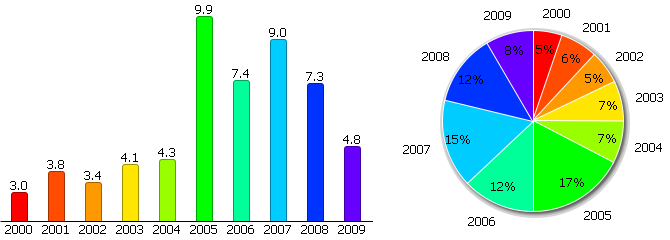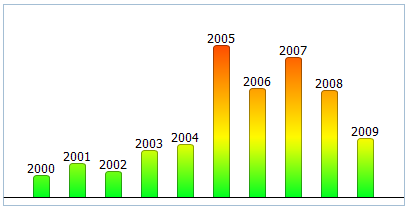Table of Contents
Chart Coloring
The library supports different color variations. If color makes no matter, developer can use a default value. Otherwise, color can be specified with the definite value or with a function.

Fixed color
In this case all chart elements have one color. The method is more appropriate for Bar Charts than for Pie Charts.
var chart = new dhtmlXChart({ color:"#66cc33", … })
Color template
In this case color of chart elements specifies with the template instead of fixed value as a color property :
/*color is set in data object*/ var data = [ { sales:"7.3", year:"2008", color:"#880000"}, { sales:"4.8", year:"2009", color:"#000088"} ]; var chart1 = new dhtmlXChart({ … color:”#color#” }) /*colors are set depending on object values*/ var chart2 = new dhtmlXChart({ ... color:function(obj){ if (obj.sales > 5) return "#ff9900"; return "#66cc00"; } }) /*alternative colors*/ var chart3 = new dhtmlXChart({ ... color:function(obj){ index++; if (index % 2) return "#ff9900"; return "#66cc00"; } });

Color gradient
Bar charts allow to define color gradient for bars. It can be done using a function that takes a gradient object as an argument.
In this case we can assign colors to the gradient object by using the addColorStop() method:
addColorStop(position, color)
- position - a number between 0.0 and 1.0 that defines the relative position of the color in the gradient,
- color - a string representing a CSS color.
var chart = new dhtmlXChart({ … gradient:function(gradient){ gradient.addColorStop(0.0,"#FF0000"); gradient.addColorStop(0.8,"#FFFF00"); gradient.addColorStop(1.0,"#00FF22"); } })
